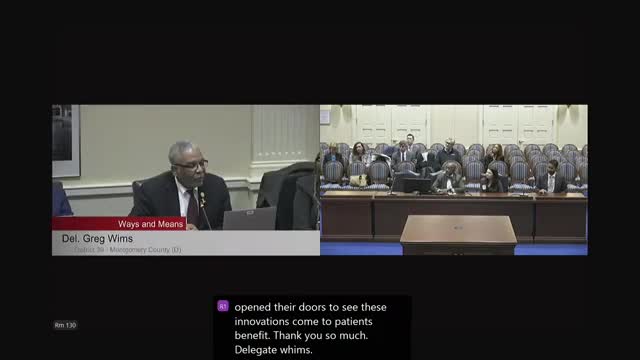Breakthrough gene editing offers hope for sickle cell anemia patients at Johns Hopkins University
January 15, 2025 | Ways and Means Committee, HOUSE OF REPRESENTATIVES, Committees, Legislative, Maryland
This article was created by AI summarizing key points discussed. AI makes mistakes, so for full details and context, please refer to the video of the full meeting. Please report any errors so we can fix them. Report an error »

A groundbreaking discussion on sickle cell anemia treatment took center stage during the recent W&M Committee Session in Maryland, igniting hope for families affected by this debilitating disease. Delegates shared personal stories, highlighting the urgent need for advancements in care, particularly as many have witnessed the devastating effects of sickle cell firsthand.
One of the most significant revelations came from a delegate who expressed joy upon learning about recent breakthroughs in treatment. The delegate recounted the painful journey of a childhood neighbor who suffered from sickle cell anemia and ultimately passed away at 45. This personal connection underscored the importance of the advancements being made in the field.
A representative from a leading medical institution detailed two promising treatment methods. The first is a bone marrow transplant, which has successfully cured patients, including one woman who received a match from her own son. This innovative approach has transformed lives, allowing patients to live free from the pain that once dominated their existence.
The second, and perhaps more revolutionary, is the use of CRISPR gene editing technology. Approved by the FDA last year, this method allows doctors to correct the defective gene responsible for sickle cell anemia. By editing the patient's own cells and reintroducing them, this treatment offers a potential cure that could change the landscape of sickle cell care.
The session concluded with a sense of optimism, as delegates recognized the profound impact these advancements could have on countless lives. As discussions continue, the hope is that these innovations will lead to broader access and improved outcomes for those living with sickle cell anemia.
One of the most significant revelations came from a delegate who expressed joy upon learning about recent breakthroughs in treatment. The delegate recounted the painful journey of a childhood neighbor who suffered from sickle cell anemia and ultimately passed away at 45. This personal connection underscored the importance of the advancements being made in the field.
A representative from a leading medical institution detailed two promising treatment methods. The first is a bone marrow transplant, which has successfully cured patients, including one woman who received a match from her own son. This innovative approach has transformed lives, allowing patients to live free from the pain that once dominated their existence.
The second, and perhaps more revolutionary, is the use of CRISPR gene editing technology. Approved by the FDA last year, this method allows doctors to correct the defective gene responsible for sickle cell anemia. By editing the patient's own cells and reintroducing them, this treatment offers a potential cure that could change the landscape of sickle cell care.
The session concluded with a sense of optimism, as delegates recognized the profound impact these advancements could have on countless lives. As discussions continue, the hope is that these innovations will lead to broader access and improved outcomes for those living with sickle cell anemia.
View full meeting
This article is based on a recent meeting—watch the full video and explore the complete transcript for deeper insights into the discussion.
View full meeting
